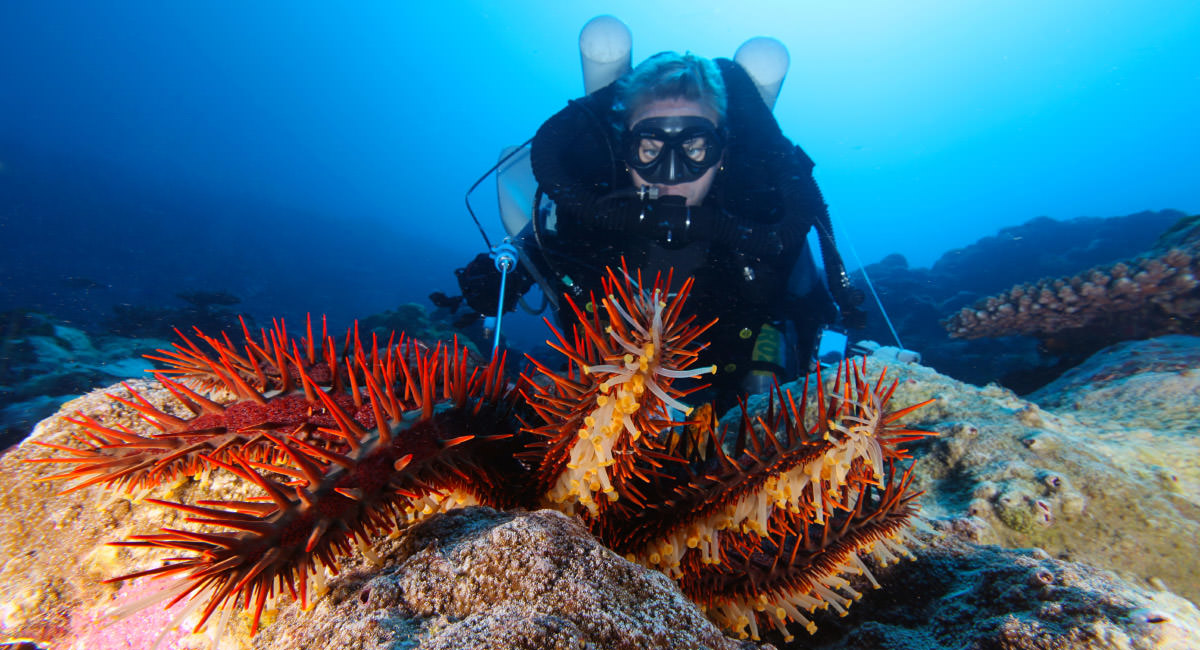Wildlife Health
American Samoa

Why is it a concern?
For "key" species in marine sanctuaries (e.g., keystone species, foundation species, indicator species, and other focal species) measures of condition and health can be important in determining the likelihood that these species will persist or recover and continue to provide vital ecosystem functions and services. Measures of health (condition) may include growth rates, fecundity, recruitment, age-specific survival, tissue contaminant levels, pathologies (disease incidence, tumors, deformities), injuries and the presence and abundance of critical symbionts or parasite loads. The National Marine Sanctuary of American Samoa continues to monitor the condition and health of several key species that provide vital ecosystem functions and services.
Fishing has reduced the size and number of many fish species, particularly grouper, snapper, and parrotfishes to the extent that large individuals are rarely seen. At present, their population levels do not appear to be changing.
Corals are a foundation species within the sanctuary and provide three dimensional structure that acts as habitat for many fish and invertebrate species. Disease has increasingly impacted some corals and coralline algae. There is concern that disease and other stressors, such as ocean acidification or greater variability in sea surface water temperatures, could reduce the reef's ability to recover from natural disturbances. Additionally, several areas within the sanctuary have been impacted by Crown of Thorns outbreaks, with notable levels of Crown of Thorns seastars causing considerable amount of damage to coral in the late 1970s, and a current outbreak starting in 2012.
Overview of Research
Research conducted by Sanctuary scientists and partners provides critical information to address existing and emerging resource conservation and management issues. The Overview of Research highlights some, but not necessarily all, of the research activities completed or ongoing at the Sanctuary.
| Project Name | PI and contacts | Links |
|---|---|---|
ASRAMP (American Samoa Reef Assessment and Monitoring Program) |
NOAA/NMFS/Coral Reef Ecosystem Division, Honolulu. Rusty Brainaird, Division Chief. |
http://www.pifsc.noaa.gov/cred/ |
Acropora growth anomaly study |
Greta Aeby, University of Hawaii |
|
Watershed and Fishery Impacts on Reef Resilience |
Peter Houk, University of Guam |
|
Sanctuary Nearshore Monitoring Program (SNAP) |
National Marine Sanctuary of American Samoa. Wendy Cover, Research Coordinator. |
No URL available. Monitoring for current threats |
Science Needs and Questions
The best available science is used by Sanctuary scientists and managers working to address priority resource conservation and management issues. As priorities change and new issues emerge, each Sanctuary develops new science needs and questions and works with partners to address them.
- What is the small-scale connectivity of coral and fish larvae in American Samoa?
- What is the status of bottomfish populations?
- What species live on the undersea volcano, Vailulu'u?
- How is disease affecting coral and coralline algal populations?
- How will coral bleaching and crown-of-thorn starfish damage combine to impact reefs?
Education and Outreach Material
Crown of Thorns Lesson Plan, National Park Service
References
Birkeland, C. E., R.H. Randall, R.C. Wass, B. Smith, and S. Wilkins. 1987. Biological Resource Assessment of the Fagatele Bay National Marine Sanctuary. NOAA Technical Memorandum Number 3

